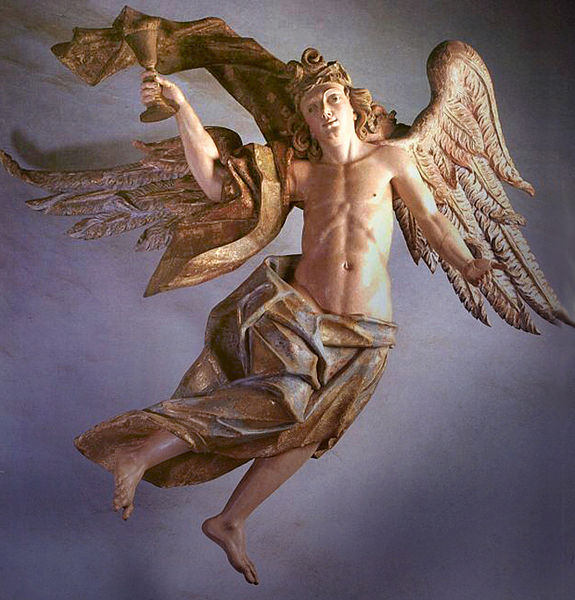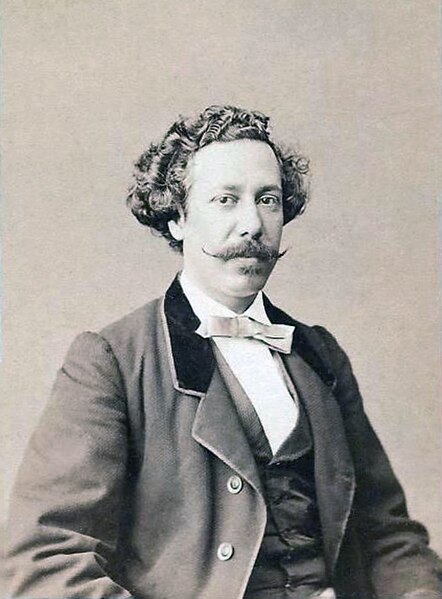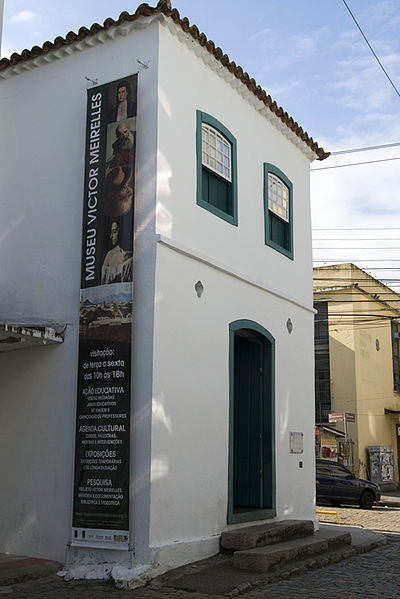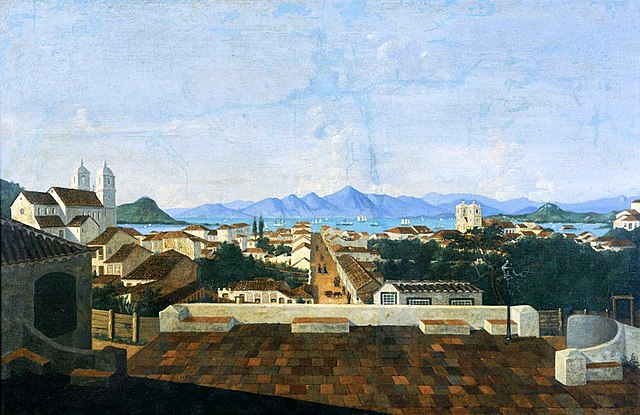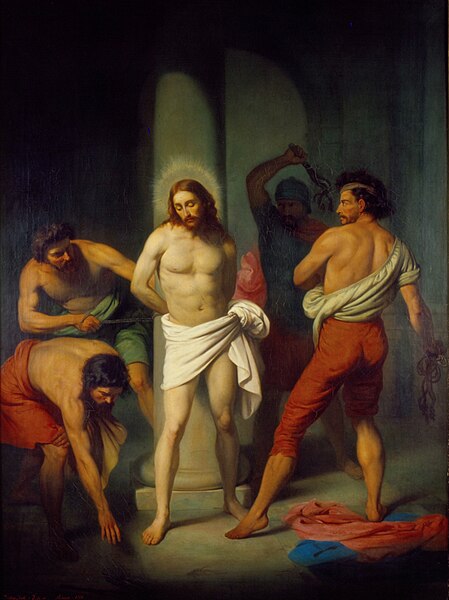The creation of art in the geographic area now known as Brazil begins with the earliest records of its human habitation. The original inhabitants of the land, pre-Columbian Indigenous or Natives peoples, produced various forms of art; specific cultures like the Marajoara left sophisticated painted pottery. This area was colonized by Portugal in the 16th century and given the modern name of Brazil. Brazilian art is most commonly used as an umbrella term for art created in this region post Portuguese colonization.
Aleijadinho: Angel of the Passion, ca. 1799. Congonhas do Campo
Cave paintings, Serra da Capivara National Park.
Burial urn, Marajoara culture. American Museum of Natural History.
Santarém culture. Museu Paraense Emílio Goeldi.
Victor Meirelles de Lima was a Brazilian painter and teacher who is best known for his works relating to his nation's culture and history. From humble origins, his talent was soon recognized, being admitted as a student at the Imperial Academy of Fine Arts. He specialized in the genre of history painting, and upon winning the Academy's Foreign Travel Award, he spent several years training in Europe. There he painted his best-known work, Primeira Missa no Brasil. Returning to Brazil, he became one of emperor Pedro II's favorite painters, joining the monarch's patronage program and aligning himself with his proposal to renew the image of Brazil through the creation of visual symbols of its history.
Meirelles, 1860s
The house where Meirelles was born, today the Victor Meirelles Museum
View of Desterro, 1847. Victor Meirelles Museum
The Flagellation of Christ, 1856. A canvas made during his period as a fellow at the Academy in Europe, which earned him an extension of his scholarship. National Museum of Fine Arts

